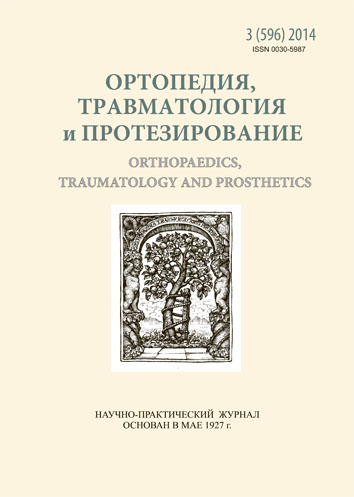Assessment of the adequacy of the prevention of thromboembolic complications in patients after major orthopedic operations in ukraine (study ENOVA)
DOI:
https://doi.org/10.15674/0030-598720143108-112Keywords:
venous thromboembolic complications, orthopedic surgery, low molecular weight heparins, anticoagulantsAbstract
Among the complications occurring in patients after severe orthopedic surgeries the most dangerous stuff for life is venous thromboembolism the likelihood of which persists for several weeks after leaving of inpatient department. However, over 40 % of patients with an increased risk of venous thromboembolic complications (VTEC) do not receive any preventive treatment. In Ukraine there was conducted the first multicentre non-interventional observational study ENOVA on analysis of prevention of VTEC after major orthopedic operations. Primary objective: to compare the actual duration of pharmacological prophylaxis of VTEC in patients after major orthopedic surgery to the recommended national and international guidelines. Secondary objectives: 1) to compare the frequency of prevention of VTEC with low molecular weight heparin (LMWH) to using other anticoagulants; 2) to assess patient adherence to medications recommended by the physician at discharge from the hospital. Methods: 304 patients from 11 centers after hip replacement, knee replacement or surgery in cases of hip fractures were included in this study. Demographic data, date and type of surgery, comorbidities, prescribed preventive therapy and its duration were recorded in the registration form for each patient. For statistical analysis there was used sequential method for selecting data. Results: The true picture of thromboprophylaxis in patients in hospital and after discharge was revealed. There was established that for all patients in the inpatient department for prevention of VTEC anticoagulants were prescribed. However, the duration of thromboprophylaxis in the most cases did not meet international and national guidelines. In addition, about a quarter (23.56 %) patients did not adhere to the proposed extended thromboprophylaxis. Leading position among prescribed anticoagulant take LMWH.
References
- Bergqvist D. ETHOS Investigators Evaluation of the duration of thromboembolic prophylaxis after high-risk orthopaedic surgery: The ETHOS observational study / D. Bergqvist, J. I. Arcelus, P. Felicissimo // Thromb. Haemost. — 2012. — Vol. 107 (2). — P. 270–279. DOI: 10.1160/TH11-07-0463.
- Venous thromboembolism risk and prophylaxis in the acute care hospital setting (ENDORSE survey): findings in surgical patients / A. K. Kakkar, A. T. Cohen, V. F. Tapson [et al.] // Ann. Surg. — 2010. — Vol. 251 (2). — P. 330–338. DOI: 10.1097/SLA.0b013e3181c0e58f.
Downloads
How to Cite
Issue
Section
License
Copyright (c) 2014 Volodymyr Filipenko, Olga Podgayskaya

This work is licensed under a Creative Commons Attribution 4.0 International License.
The authors retain the right of authorship of their manuscript and pass the journal the right of the first publication of this article, which automatically become available from the date of publication under the terms of Creative Commons Attribution License, which allows others to freely distribute the published manuscript with mandatory linking to authors of the original research and the first publication of this one in this journal.
Authors have the right to enter into a separate supplemental agreement on the additional non-exclusive distribution of manuscript in the form in which it was published by the journal (i.e. to put work in electronic storage of an institution or publish as a part of the book) while maintaining the reference to the first publication of the manuscript in this journal.
The editorial policy of the journal allows authors and encourages manuscript accommodation online (i.e. in storage of an institution or on the personal websites) as before submission of the manuscript to the editorial office, and during its editorial processing because it contributes to productive scientific discussion and positively affects the efficiency and dynamics of the published manuscript citation (see The Effect of Open Access).














